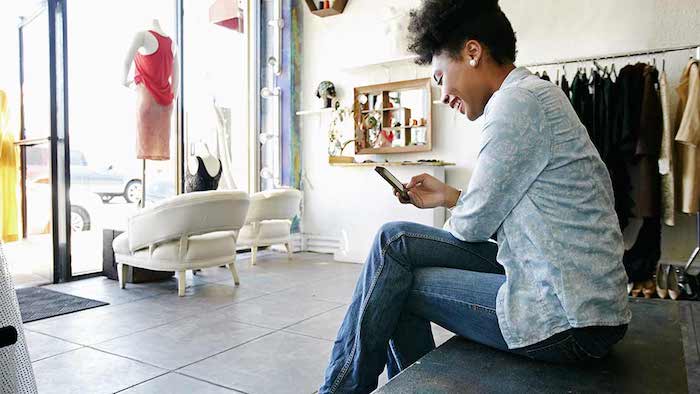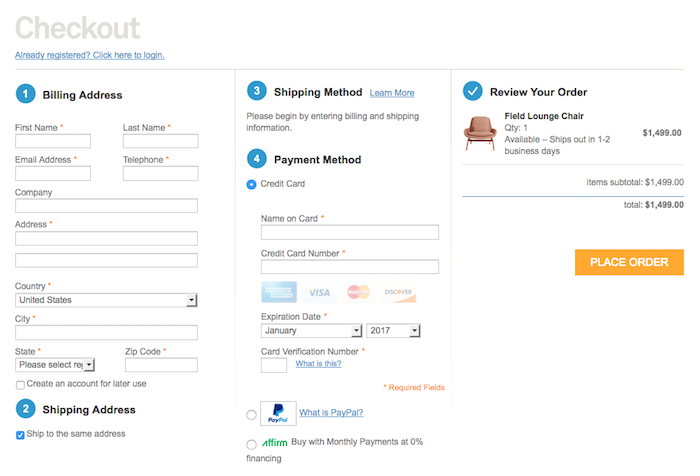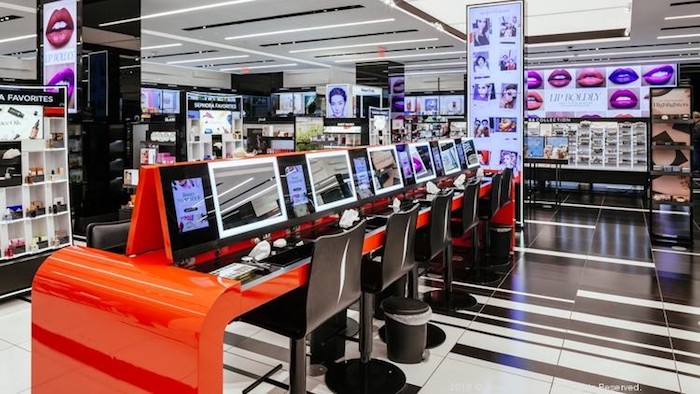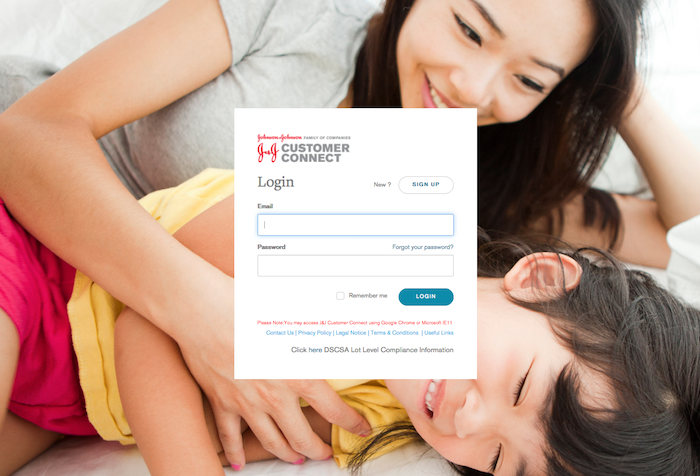2018 Ecommerce Forecast: 8 Trends Leading to Higher Conversions
Retailers began 2017 with fears of an “apocalypse.” Thankfully–as we see from the current holiday sales data–this year is going to wrap on a much more favorable note. From Command C’s vantage point, we never doubted the strength of smart, customer-focused retailers who remain fluid and open to the changes in retail. We get to work with these businesses everyday. Inspired by their spirit of innovation, here’s our 2018 Ecommerce Forecast: 8 Trends Leading to Higher Conversions.
Related: Apple Ushers In New Ecommerce Era
1. Mobile (Finally!) Converts

When the retail industry looks back at the 2017 holidays, we’ll see that this was the year mobile turned the conversion corner. Until now, retailers have primarily thought of mobile as a research tool, with purchases happening on desktop. And customer behavior doesn’t change in an instant–but it does change.
On November 28, 2017, Business Insider reported that Cyber Monday was mobile’s first $2 billion day. EVER. Smart phones accounted for approximately 21% of retail revenue over the entire Thanksgiving weekend. Furthermore, “conversion rates increased 10% on phones when compared to last year.”
Buzzfeed also published this awesome news: Small Online Retailers Were the Big Winners Over Black Friday Weekend. Online merchants with less than $10 million in annual sales increased their BFCM (Black Friday-Cyber Monday) profits at twice the rate of online mega-retailers when compared to 2016. The smaller stores also converted mobile sales at a 30% higher rate than their large-scale competitors.
In 2018, shoppers will expect a retailer’s mobile experience to be as strong as its desktop experience. This will be true of all merchants, regardless of size. If you’re wondering how to optimize your store for mobile, check out our 6 Tips for More Sales on Mobile.
2. Customers Expect Payment to Be Fast & Smooth

In one of our favorite partner articles of the year, Magento asked How Will ‘Uberfication’ Change the Future of Commerce? The writers explained that as more people use Uber, they come to expect the same level of ease in other transactions.
For online retailers, this means stripping away any barriers to payment. (It seems hard to imagine that merchants have such barriers, but they do.) Think about things like forced account registration before checkout, payments without auto-fill for contact info, and payments with far too many steps.
In 2017, Shopify introduced Shopify Pay. With this feature, once a shopper enters her information in a Shopify store checkout, it’s automatically applied to all other Shopify stores using Pay. This reduces the Shopify checkout process from 16 fields to 2! Also, Google debuted Pay with Google this year. It’s a similar service where Google securely stores a shopper’s credit card and shipping info. Pay with Google has limited availability for now, but the company’s intention is to make it ubiquitous. And all this before we talk about Apple Pay and other customer payment options.
In 2018, shoppers will expect to be able to pay a number of ways, all of which will need to be concise, easy, and quick.
3. Shoppers Want “Ferrari Fast” Online Stores

According to the marketing firm, Blue Corona, “40% of users abandon a website that takes more than 3 seconds to load.” For comparison, a Ferrari takes 3 seconds to go from 0 to 60 miles per hour. Indeed, we want websites to be Ferrari fast.
Earlier this year, Jeff Bezos was interviewed about his strategies for preparing Amazon for the future. He said:
“I very frequently get the question: ‘What’s going to change in the next 10 years?’ And that is a very interesting question; it’s a very common one. I almost never get the question: ‘What’s not going to change in the next 10 years?’ And I submit to you that that second question is actually the more important of the two — because you can build a business strategy around the things that are stable in time.” – Jeff Bezos, Amazon CEO
To build a retail business, think about what customers will continue to want years from now. For example, shoppers will always desire great customer service, convenience, and speed. How do we keep improving these?
eMarketer just published the Ecommerce Roundup 2017. In it, they cite a study of 80 major retail websites that “take an average of 9.5 seconds to load on mobile devices, and 16.6 seconds for desktop.” The main source of the slog is “digital bells and whistles.” The same retailers use an “average of 70 third-party ecommerce applications.” All these stand-alone apps and features drag down site speed.
In 2018, retailers will need to streamline their sites for speed. Shopify has long offered great tools “out of the box.” Now, with features like fraud protection built into the platform, Magento narrows the gap as well. As platforms offer more integrated features, they diminish the need for 3rd parties that can slow things down.
4. Omnichannel Grows Up

Last week a leading retail publication, Retail Dive, crowned Sephora as the Store Concept of the Year. The beauty retailer started an in-house Innovation Lab in 2015, and since then, they’ve debuted cool services like a Virtual Artist app to “try on” and buy their make-up via smartphone. (We shared about their digital in-store mirrors in our newsletter, too.) The Sephora branded site looks good, and you can buy their products on Amazon. The company is a strong example of omnichannel–they offer shoppers numerous ways to experiment and buy products in-store, online, and via mobile.
As cited in eMarketer’s Ecommerce Roundup 2017, UPS (United Parcel Service) conducted a study of 5,000 online shoppers and learned that “71% of transactions are influenced by the online experience in some way.” Perhaps it’s webrooming, when customers research online and then purchase in a physical store. Or maybe its opposite, showrooming, when people browse an item in-store and then buy it online. The point is the interplay between branded online stores, physical stores, marketplaces like Amazon, mobile devices, and social selling (e.g. Instagram) is in full swing.
In 2018, shoppers will want to access products online, via mobile, through marketplaces, and in person, if possible. If 71% of customers go online during the buying process, that means only 29% of shoppers now walk into a store and buy something without online prep. This is a major shift in customer behavior within a few short years. The good news is retailers don’t have to unlock the new landscape on their own. Command C has partners like Stitch Labs for the path ahead.
5. Personalization Becomes the Norm

The headline of a recent eMarketer article nailed the importance of personalization: The Price of Personalization Failure? $756 Billion. That may seem extreme, but as the article explains, “41% of US consumers said they ditched a company because of ‘poor personalization and lack of trust’.” Accenture, the company behind the study, concluded that these consumers took $756 billion in sales with them when they left the online stores that did not meet their needs.
The articles promotes that one way to get to know your customers is to offer products via subscription service. In the process of signing up for subscriptions, shoppers answer a lot of questions. For example, Stitch Fix has collected 85 data points on every person who buys their clothing subscription.
But if a retailer doesn’t want to start subscriptions, he can still engage his shoppers in new, interesting ways. For instance, check out the Good Earth Tea Quiz. With five quick questions, from ideal vacation to favorite cookie, Good Earth Teas builds a profile of their customers with every quiz. They then suggest teas based on the shopper’s answers. It’s playful and feels more intimate than buying tea without the fun prompts.
In 2018, shoppers will expect a more personalized shopping experience. If you’re curious about how to add personalization to your store, take a look at How Online Merchants Use Artificial Intelligence to Sell.
6. Shoppers Want to Buy Complex Products Online

This next trend–shoppers want to buy complex products online–perfectly follows personalization. Earlier this year, we shared 10 Product Configurators Increasing Sales Today, and it’s proven to be one of our most popular posts of 2017. To refresh, configurators allow shoppers to design their own products. Configurators are the pinnacle of personalization. What’s more, as our story pointed out, people are ready to design complex and expensive items. Think storage sheds, bicycles, and Tesla automobiles. The photo above shows Adidas’ Uniform Configurator, where shoppers can custom design the look for an entire sports team.
Also, shoppers are becoming more comfortable with buying complicated products site unseen because online retailers are giving better information. One of our fave examples of this is the sizing chart from ASOS. A customer answers a few questions about how she likes clothing to fit, and the site provides sizing suggestions. They add a helpful line like, “75% of customers like you bought a size 8 and didn’t return it.” This extra step goes a long way to building trust. (Read more on ASOS and other ecommerce innovators.)
In 2018, shoppers will be ready to customize their own products, as well as buy complex items online. Merchants should not be shy. Shoppers are receptive, more and more, to getting all of their product needs met online. (Remember Stone Forest, the New Mexico-based company that sells 2,000-lbs outdoor fountains?)
7. B2B (Business-to-Business) Comes Online

As with the trend of buying more complex products online, customers are now ready to shop for their business needs online. This is significant because corporate industries can be slow to change. However, the pull of greater convenience and ease has businesses bringing the procurement process online. Forrester Research predicts that B2B sales will climb to $1.2 trillion in the United States by 2021.
Another reason this trend will grow in 2018 is because ecommerce platforms are providing the infrastructure for B2B success. Earlier this year, Shopify Plus introduced the Shopify Wholesale channel. In one example of how to use this channel, merchants can create separate price lists for wholesale customers. Customers then log into the merchant’s wholesale site, and see the inventory and prices that the retailer has curated for them.
For Magento, when they released Magento 2.2 this year, they fortified the platform’s B2B capabilities. Magneto now lets B2B retailers set up company accounts, and numerous people from a client business can log into an account. Buyers and merchants can also build a project together through the “My Quote” tool, where buyers submit their needs list, and retailers respond with the appropriate inventory and price lists.
In 2018, B2B shoppers will want the same convenience and ease they’ve come to know through B2C (business-to-consumer) shopping. B2B purchases are all about efficiency and team collaboration. Online shopping is an excellent venue to meet these needs.
8. Voice-Enabled Commerce Learns to Talk

The day may come when we’ll look back at Amazon’s Shopping with Alexa video and have a little laugh at its quaintness. (Think Internet videos 1998.) But voice-enabled commerce is a new trend to be taken seriously. eMarketer estimates “there will be 35.6 million smart speaker users in the US this year, representing 13% of internet users.” TechCrunch reports that Amazon sold millions of Echo Dots and Amazon Fire TV Sticks with Alexa Voice Remote over BFCM 2017. More and more people are speaking their shopping lists to Alexa, resulting in a new means of growth for online sales.
Over the summer, WalMart and Google inked a deal to offer WalMart products via Google Home. With these big players entering the ring, shoppers are sure to increasingly adopt voice-enabled commerce in the coming year.
In 2018, more customers will start to buy products through voice-enabled assistants. For retailers, 2018 will be the opportunity to get ahead of the curve here. If merchants can serve the early adapters of voice shopping, they’ll be in pole position when this trend hits the mainstream in the future.
On a final note, we’re excited about the wide, diverse spectrum of retail businesses poised to thrive online. If you’re ready to build one–or more!–of the trends from our 2018 Ecommerce Forecast into your online store, we’re ready to help.
